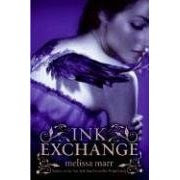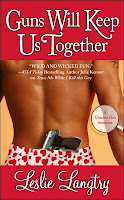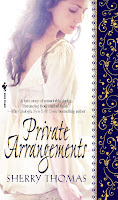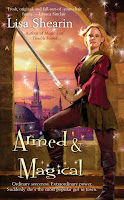STATUS: TGIF and I’m totally rockin.” I finished a requested changes letter for one contract and I’m tackling another. I might be out of here before 6 tonight!
What’s playing on the iPod right now? TIDE IS HIGH by Blondie
Okay, you guys are going to hate me for pointing this out but it’s true. Those who commented had different opinions on the effectiveness of the cover copy used for INK EXCHANGE.
Some thought it would make you pick up the book. Others thought that it was too vague and general.
Yep, you’re starting to think like agents. This is why the biz is so subjective. This is why your query pitch will often work for one agent and not another. We all have different opinions and tastes.
Still, trying to make your query pitch read like the back cover copy of the book is worth doing. Why? Because the cleaner and sharper it sounds, the better chances you’ll have to win an agent’s attention—because we are used to reading back cover copy. The rhythm, the strategy, it speaks to us.
So no, even if you totally rework your query pitch to read like back cover copy that doesn’t mean it will be effective 100% of the time because what agents like individually will vary.
But I guarantee that agents will probably read the pitch twice and hesitate over it. I can’t prove it but I think if copy reads well, that alone gets our attention. Even if the storyline doesn’t float our boat per se.
Plot Catalyst
You guys did a great job on this cover copy. All of you spotted the catalyst right away: Leslie getting the tattoo sets the stage for the rest of the story to unfold. I’m willing to bet this occurs in the first 30 pages of the novel, but I haven’t read this book yet so I don’t know for sure. If anyone has seen an early copy, feel free to verify whether that is true or not.
Supporting Detail to Hone the Pitch
This is a combo of back-story (for paragraph 1) and character development with a little hint of other plot elements (paragraph 2). So all three were used.
Paragraph 1 is all back-story. Chances are good the copy editor chose this as INK EXCHANGE is a sequel to a previously published book. We need a sense of what happened in book 1 to orient us for this novel.
Paragraph 2 starts with character element. We get a sense of Leslie’s need for something different in her life. In fact, we think she might be desperate for that change. The last two sentences of that paragraph highlight some other plots elements that are going to be crucial to the story. She’s going to be bound with Irial and drawn in to the faery world.
Since he’s on the dark side (nod to paragraph 1 for that info about his ruling the “dark” court), we can make some assumptions. Words like “sinister” help with this. This bonding, this being drawn in could have dire consequences.
Now, several of you complained that it was too vague. Not enough details. Remember, you only have so much space on a back cover copy. You also might not want to give too much of the surprise, twist, or the storyline away.
Your pitch is just a teaser. Although there is room for a bit more detail, it may or may not always be necessary. And opinions will always vary from person to person.
You can’t worry about that (otherwise that would drive you crazy). Just worry about making the pitch paragraph as enticing as possible using the methods we are outlining here.



.jpg)

.jpg)
